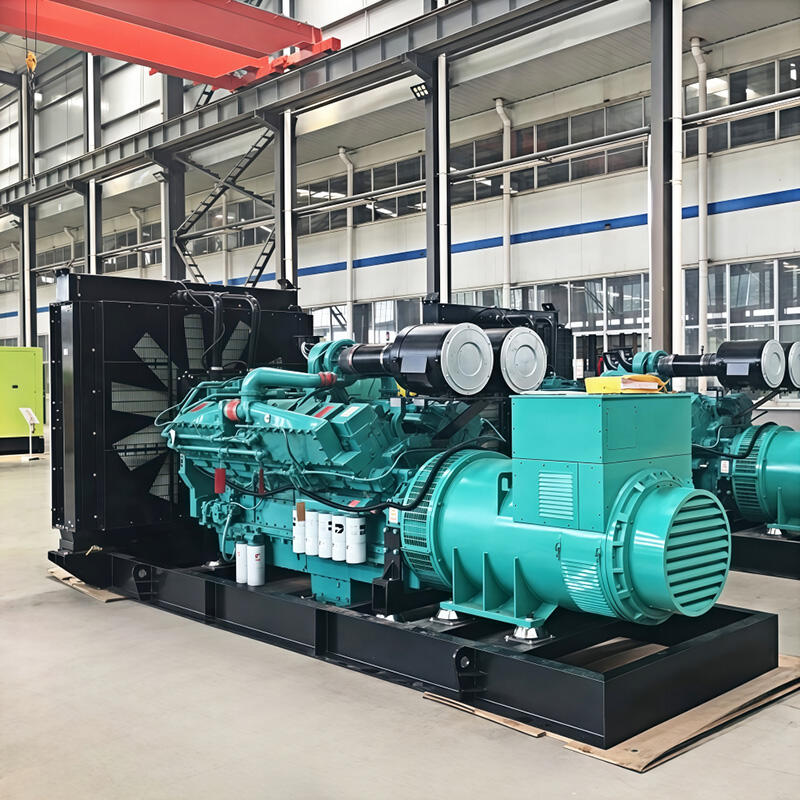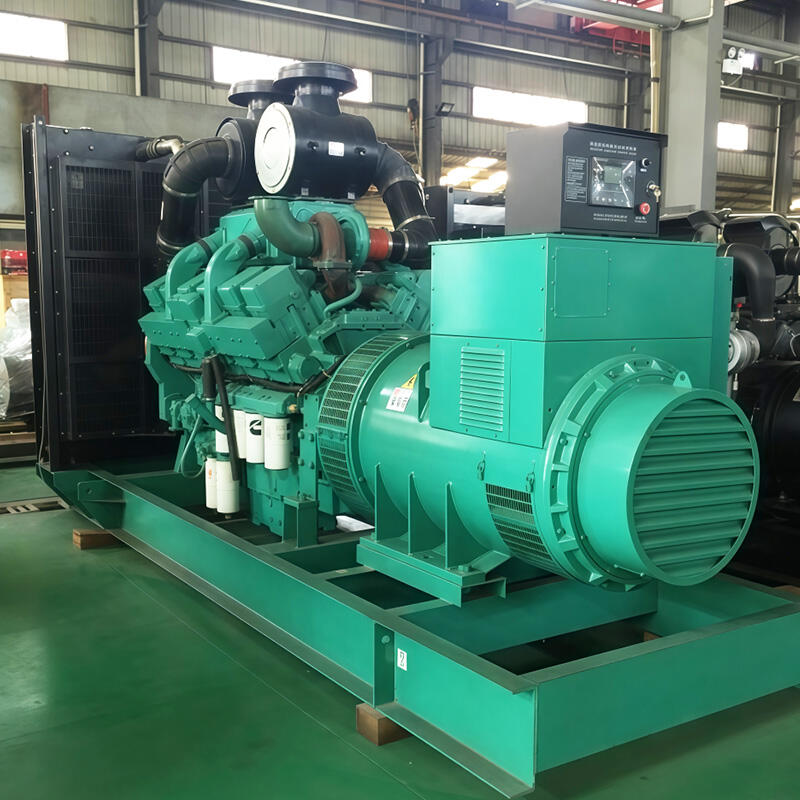Global Generator Market Growth and Price Trends
Market Size and Projected CAGR (2024-2030)
The generator market has been witnessing substantial growth, with recent industry reports indicating a robust market size. Currently, the market is valued significantly, driven by increasing urbanization and rising energy demands. Projections for the generator market from 2024 to 2030 suggest a notable Compound Annual Growth Rate (CAGR), with experts citing a range of factors fueling this growth. Notably, a report anticipates the market reaching USD 12.69 billion by 2030, rising at a CAGR of 7.46% as per Research and Markets' data on data center generators.
Several growth drivers contribute to these projections, including expanding urban infrastructures and the heightened dependency on backup power systems due to frequent power outages. Additionally, the increasing need for uninterrupted power supply in data centers, driven by the rapid expansion of artificial intelligence and big data analytics, further propels market growth. As these technological advancements require a reliable and continuous power supply, the demand for efficient generator solutions continues to rise. Consequently, ongoing industry innovation in generator technology promises continued market expansion, ensuring generators remain a critical component in maintaining operational resilience across various sectors.
Shift Toward Fuel-Efficient and Hybrid Systems
The generator market is undergoing a considerable transformation, driven by a shift towards fuel-efficient and hybrid systems. Traditional fuel generators are being increasingly complemented or replaced by hybrid systems that offer improved efficiency and reduced carbon emissions. For instance, advancements in generator technology have led to significant efficiency improvements, with new models boasting enhanced fuel efficiency by integrating renewable energy sources like solar and wind.
Consumer preferences are rapidly evolving, with a growing inclination towards greener technologies. This shift is supported by market studies highlighting a surge in demand for environmentally friendly products. The need for sustainable energy solutions has been accelerated by rising fuel prices and strict environmental regulations, which compel manufacturers to innovate and adopt cleaner fuel options such as hydrogen and natural gas hybrid systems.
As fuel-efficient and hybrid systems gain traction, the generator industry is expected to see a broader adoption of these technologies. This transition not only offers a strategic advantage in terms of compliance with environmental regulations but also provides a cost-effective solution for managing power demands in a sustainable manner. Thus, integrating these cutting-edge systems is essential for industry players aiming to meet both current and future power requirements efficiently.
Key Drivers of Generator Price Trends
Technological Advancements in Backup Power Systems
Recent technological innovations in backup power systems, notably the integration of Internet of Things (IoT) technology, are transforming how these systems function. IoT integration enables real-time monitoring, predictive maintenance, and efficient load management, which, although enhancing operational efficiency, can affect cost structures and pricing strategies. This shift towards smarter systems could lead to initial higher costs due to advanced technology but may promise long-term savings through efficiency improvements. Experts forecast that as IoT technologies become more cost-effective, their adoption will drive future trends in generator pricing by enhancing both functionality and cost-effectiveness.
Diesel vs. Gas vs. Hybrid Fuel Dynamics
When analyzing generator fuel dynamics, it's critical to compare the costs and use case scenarios of diesel, gas, and hybrid fuel generators. Diesel generators generally have lower upfront costs but higher operational expenses due to fuel prices. Gas generators, benefiting from regions with abundant natural gas production like Texas and Pennsylvania, offer more stable operational costs. Hybrid fuel generators are becoming increasingly attractive as they offer a balance between cost and environmental impact. Market trends indicate a shift towards hybrid options driven by fluctuating fuel prices and regulatory pressures. Statistical data shows that rising fuel prices, especially diesel, are influencing buyers to opt for more sustainable hybrid systems.
Regulatory Costs and Emission Standards
Regulatory changes heavily impact pricing strategies for generators, especially as emission standards become stricter globally. Compliance costs, including necessary upgrades and technology integration to meet these standards, can lead to increased product prices. However, these costs are essential to maintain market competitiveness and sustainability. Future regulations promise to further reshape the landscape, as countries aim for lower carbon footprints, compelling manufacturers to innovate and optimize in response to impending regulatory pressures. Understanding these dynamics is crucial for navigating price trends and preparing for potential market shifts.
Implications for Data Center Infrastructure
Scalability Demands and Modular Generator Adoption
The ever-increasing demand for scalability in data centers has prompted a shift towards modular generators. Unlike traditional static power solutions, modular generators offer the flexibility to expand and contract power capabilities as required, aligning perfectly with the scalability needs of modern data centers. For instance, industry leaders like Cummins and Caterpillar have adopted modular systems to enhance flexibility in power provision, thereby providing seamless integration into existing infrastructure. Furthermore, the adoption of modular designs is not only technologically advantageous but also cost-efficient, as it reduces the need for large upfront investments in generator capacity and allows for scalable spending in competitive markets.
Integration of Hybrid Power Solutions
Incorporating hybrid power solutions into data center infrastructure significantly bolsters resiliency. Hybrid systems, which combine traditional diesel generators with renewable energy sources or battery storage, offer the dual benefits of reliability and sustainability. Successful case studies, such as those from companies like Perkins, demonstrate the environmental benefits and operational efficiency of hybrid setups within data centers. These solutions underscore the potential for comprehensive cost-benefit advantages, including reduced fuel dependency and enhanced energy savings, crucial for maintaining a competitive edge in operational frameworks.
Impact on Total Cost of Ownership (TCO)
Generator price trends directly affect the total cost of ownership (TCO) for businesses, making strategic selection crucial for long-term fiscal health. Different generator types offer varied TCO implications, often highlighted through industry analyses and expert testimonies. For example, Cummins’ generators are praised for their long-term savings despite higher initial investment costs, offering considerable advantages via lower operational expenses and reduced maintenance requirements over time. Balancing the immediate costs with projected savings enables businesses to make informed decisions that align generator investments with their financial strategies.
Regional Variations in Pricing and Procurement
North America's Dominance in High-Capacity Deployments
North America leads the globe in deploying high-capacity generators, driven by the region's expansive data center projects. Factors such as the presence of tech giants like Amazon and favorable energy policies bolster this dominance. Statistical insights reveal that North America comprises a significant share of the global market with steady projected growth. According to industry analysis, the compound annual growth rate from 2024 to 2028 is expected to stand at 5.5%, reflecting robust procurement trends. Additionally, regional energy policies, such as incentives for cleaner energy solutions, influence procurement practices, encouraging investments in advanced generator technologies. This environment supports the deployment of high-capacity generators, ensuring that large-scale data centers can reliably meet increasing energy demands.
Asia-Pacific's Growth in Edge Data Center Demand
The Asia-Pacific region is experiencing a surge in demand for edge data centers, which in turn fuels the need for robust generator solutions. With technological infrastructure rapidly evolving, this region is poised for substantial growth in small to medium data center deployments. Market research forecasts indicate a potential growth rate in the edge data center sector, with opportunities intensifying in countries like China and India, marked by increasing investment activities. Influential market players like Huawei and Tencent are pivotal in driving this expansion, as they enhance localized data processing capabilities to reduce latency and support digital transformation initiatives. This boom not only reflects expanding digital ecosystems but also highlights the strategic necessity for installing versatile and efficient generator systems to support new and existing infrastructure.
Future Outlook: Sustainable Innovations and Cost Pressures
Hydrogen Fuel Cells and HVO Adoption
Hydrogen fuel cells offer a revolutionary sustainable energy source for generators. They provide a cleaner, more efficient alternative to traditional diesel-based power generation methods. As the global shift towards green energy solutions accelerates, hydrogen fuel cells are gaining traction due to their ability to produce zero emissions and reduce environmental impact. According to a recent study, the adoption rate of hydrogenated vegetable oil (HVO) in generator applications is also on the rise, hinting at a promising future for renewable energy sources. HVO, derived from biological materials, offers a compelling blend of efficiency and sustainability, helping to meet stringent emissions targets set by governments worldwide. Expert forecasts suggest that these sustainable innovations will likely reshape the generator market, elevating it towards a more environmentally friendly trajectory and influencing future pricing models.
Automation's Role in Reducing Operational Expenses
Automation is rapidly transforming operational efficiencies in generator management. By integrating advanced automation technologies, companies are witnessing significant cost reductions and streamlined processes. For instance, a recent report highlighted that automation could reduce operational costs by as much as 30%, primarily by minimizing the need for manual supervision and optimizing maintenance schedules. This reduction in operational expenses is critical, considering the increasingly competitive landscape within the energy sector. Looking forward, further innovations in automation technology are anticipated, promising continued declines in costs and reliance on labor. Future advancements may include predictive maintenance through machine learning algorithms and enhanced remote monitoring, ensuring that generators run at optimal efficiency with minimal human intervention. Such developments will be instrumental in driving down operational expenditures and bolstering the profitability of energy production systems.






